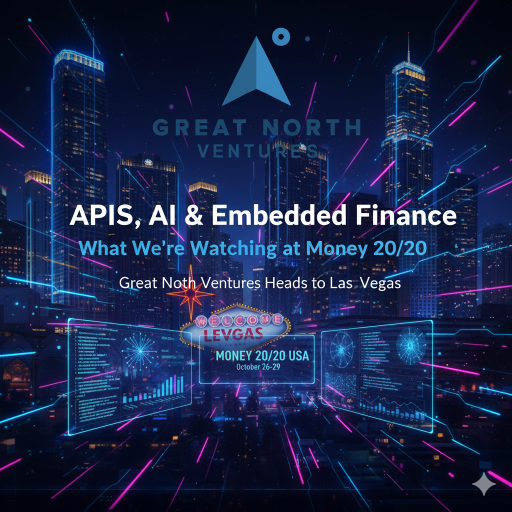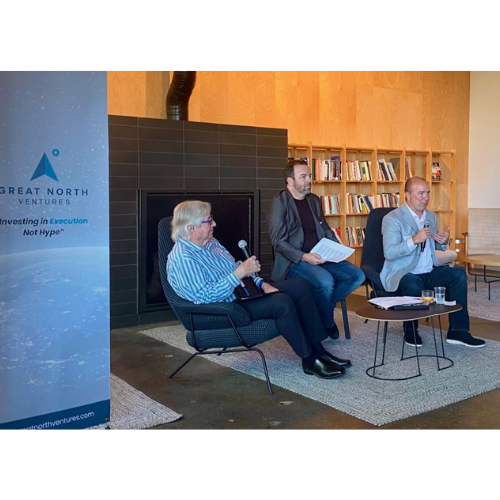Tim Li is a fintech veteran with two decades of experience working at the intersection of banking and technology.
After earning a master’s in engineering and building microprocessors at Intel, he pivoted to financial services in the early 2000s, joining JPMorgan Chase to help launch its first digital banking platforms. As the financial crisis hit and Dodd-Frank changed the industry landscape, Li moved into fintech, joining startups like Kabbage and RealtyMogul before launching his own ventures.
Li is the co-founder of LendAPI, launched in 2024 to help financial institutions build and launch lending products faster, with less cost and complexity. Its platform covers everything from onboarding to credit decisioning, helping banks and fintechs launch faster and at lower cost. (Read our latest article about LendAPI here)
Li has had a front-row seat to key shifts across the industry: embedded finance, the rise of AI and the ongoing debate around data portability and consumer privacy. I spoke with him about what’s next for lending, how regulation may evolve, and where fintech founders are focusing in a more disciplined funding environment.
Comments have been edited for clarity.
You’ve been pushing this idea of ‘drag and drop’ — often called embedded finance. From your vantage point, where is lending headed in the next couple of years, with regulation shifting, AI taking a bigger role, and capital returning?
In the next year or so, I see lending moving toward what I call “embedded everywhere.” The idea is simple: at the point of need, at the point of purchase, credit has to be available instantly — as easy as Apple Pay. When you pull out your phone at the POS, financing should be right there, especially for larger-ticket items above $300. That’s where the industry is heading: embedded everywhere, whether on a website or at checkout.
The second piece is AI. Full automation of final credit decisions may still be a couple of years off, but AI is already reshaping the process. We’re seeing AI agents handle customer service, tools that support underwriters in making faster, more accurate decisions on complex products like mortgages, and systems that help consumers choose financial products more confidently. That wave of automation is already arriving. On our own platform, we’re incorporating these AI tools so lenders and banks can make decisions that are faster, cleaner and more accurate.
One could have said that a couple of years ago. What’s different now?
The difference is adoption, or the psychology of adoption. A couple of years ago it was still novel — a lot of these were kind of novelty items, or you’d see demos of people talking to a robot and it still sounded sort of arbitrary.
Right now it’s inextinguishable. All that technology, and all that CPU power, is now more available than ever, and the majority of these AI algorithms are much better now than they were a couple of years ago. Plus, executives at banks are being exposed more and more to AI in their personal and family lives. That makes it more palatable for larger players to say, ‘Let’s try AI for customer service, let’s try AI to scan documents, let’s try AI to answer rudimentary questions before a live agent steps in.’
Embedded finance use cases depend on secure access to account data. With the open banking rule in flux and banks and fintechs clashing over access costs, how do you see this playing out?
The center of the debate is between data access and who pays for it. It’s a losing battle to argue that the consumer doesn’t own their data — I don’t think many people would argue against that. The real argument is who pays to deliver the data. Banks aren’t built to answer a billion transaction calls from Plaid or others — that’s a huge burden on already stressed systems.
The banks are being required to deliver the data, and they’re fine with that. But someone has to pay for the additional toll that’s being forced on the banks. If you put undue burden on any sector of the economy — whether transportation or financial services — someone has to pay. Either the platforms asking for the data, like Plaid, or, indirectly, the consumer.
If API-based access to bank data becomes too difficult or clunky, what alternative approaches could emerge?
If accessing data through APIs becomes too burdensome, new solutions will emerge that are cheaper and that have less friction. For example, the consumer can simply say, ‘Here’s my bank statement.’ You scan it with AI and can pull out all the details. It’s as good as logging into Plaid and pulling the data directly. So alternatives like that could come back around.
Fintechs have shifted from growth at all costs to a more disciplined approach — being more selective about new products and features. How do you see fintech business models evolving in this environment?
During the zero-interest-rate era, money was essentially free, and VCs often took a spray-and-pray approach. That shifted after Covid, when rates spiked. Now the cost of capital is higher, and investors are demanding more. Before, you could raise a seed round with a 12-page pitch deck. Today, you need to be post-revenue and post-product just to get attention.
The scrutiny on fintechs is much tighter. It’s cyclical — every 15 to 20 years the pendulum swings depending on how cheap or expensive money is. When money is free, ideas get funded easily. When money is expensive, VCs narrow their bets and many funds close. Right now, capital is still available, but startups are being examined far more carefully.
It’s a catch-22 for founders: you need money to grow, but raising it is harder than ever. The scrutiny is much tighter now, though that’s not a bad thing: If you have a solid product and revenue, there’s still plenty of capital to help you grow.







